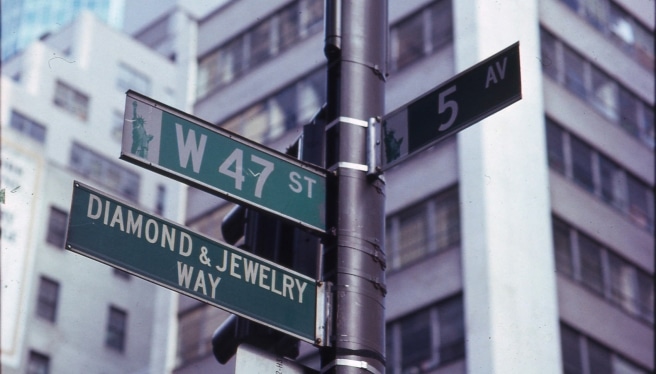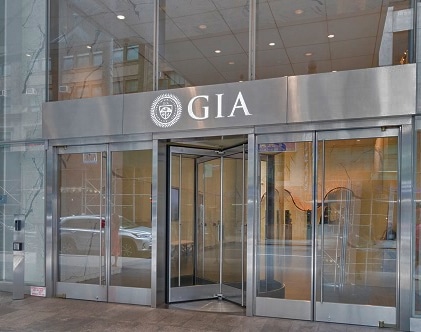Blog
Home » Diamonds blog » New York Continues Phased Recovery After Tough Lockdown
Focus on

The graduated procedure is designed to ease restrictions gradually on business activity and allow people to move around and socialize throughout the state of New York. The final phase should be introduced an about two weeks, but that will depend on infection rates, hospital capacity and the state’s ability to test and trace people who may have contracted the virus.
The city’s celebrated 47th Street Diamond District had begun reopening on June 8, when Phase 1 of the reopening process began. Jewelers and other retailers were permitted to resume deliveries, and also curbside and in-store pickup.
Among the organizations to open its doors during Phase 1 was the Diamond Dealers Club, the city’s diamond exchange, which had been shut down from March 16. So as to comply with social distancing restrictions, half the tables on the course’s trading floor were removed, and members were required to wear masks.
The Gemological Institute of America’s gem identification and grading laboratory in New York reopened on June 29. “As restrictions are lifted and the global gem and jewelry industry begins to recover, we are safely reopening GIA locations, returning staff to work and preparing to engage in our mission-driven activities,” said Susan Jacques, GIA president and CEO. “We are strictly following government regulations and guidelines, implementing new processes and adapting our facilities to keep everyone who comes to GIA – staff, clients, students and visitors – healthy and safe.”
LOOTING DAMAGE AND STORE CLOSURES
But it was and still is a torrid time for the U.S. jewelry market, with the reopening of the markets in several western and states now being delayed, because of sharply increasing infection rates.
Jewelry retailers were also hard hit by looting that took place at cities across the United States, during the protests during the killing by police of George Floyd in Minneapolis on May 25.
Signet Jewelers, the country’s largest jewelry chain, announced that would not be reopening 230 stores that has been closed during the COVID-19 pandemic, and furthermore plans to close another 150 stores before the end of the year. Some 1,100 stores that were temporarily closed due to COVID-19 have been reopened, and the company planned to have at least 75 percent of its 3,172-stores reopened by the end of June.

The city’s celebrated 47th Street Diamond District had begun reopening on June 8, when Phase 1 of the reopening process began.
During the second quarter of fiscal 2021, which ended May 2, Signet’s overall sales equaled $852.1 million, 40.5 percent below the figure reported a year earlier. The company posted a $142 million loss for the quarter, compared to a $24.2 million profit during the same quarter in 2019.

The Gemological Institute of America’s gem identification and grading laboratory in New York reopened on June 29.
CONSUMER CONFIDENCE EDGES UP
Despite the difficulties, the mood in the market retained a degree of optimism. The Conference Board Consumer Confidence Index increased in June, after virtually no change in May. The Index now stands at 98.1 (1985=100), up from 85.9 in May. The Present Situation Index – based on consumers’ assessment of current business and labor market conditions – improved from 68.4 to 86.2. The Expectations Index – based on consumers’ short-term outlook for income, business, and labor market conditions – increased from 97.6 in May to 106.0 this month.
“Consumer Confidence partially rebounded in June but remains well below pre-pandemic levels,” said Lynn Franco, Senior Director of Economic Indicators at The Conference Board. “The re-opening of the economy and relative improvement in unemployment claims helped improve consumers’ assessment of current conditions, but the Present Situation Index suggests that economic conditions remain weak. Looking ahead, consumers are less pessimistic about the short-term outlook, but do not foresee a significant pickup in economic activity.
Faced with an uncertain and uneven path to recovery, and a potential COVID-19 resurgence, it’s too soon to say that consumers have turned the corner and are ready to begin spending at pre-pandemic levels.”
Consumers’ appraisal of current conditions improved in June. The percentage of consumers claiming business conditions are “good” rose from 16.4 percent to 17.4 percent, while those claiming business conditions are “bad” decreased from 51.2 percent to 43.2 percent. Consumers’ assessment of the job market was also more favorable. The percentage of consumers saying jobs are “plentiful” increased from 16.5 percent to 20.8 percent, while those claiming jobs are “hard to get” decreased from 29.2 percent to 23.8 percent.
